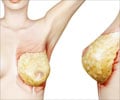Popular hospital rating systems can help identify high-quality hospitals for cardiovascular operations, but patients can achieve similar outcomes by seeking care at high-volume hospitals closer to home, new research published in the January issue of the Journal of the American College of Surgeons.
Hospital quality ratings have become a source of bragging rights for many hospitals, and they receive substantial attention from both the public and media. Two of the most recognized ratings are the U.S. News and World Report's "America's Best Hospitals" and HealthGrades' "America's 50 Best Hospitals." Although patients and caregivers increasingly use these quality ratings to choose hospitals, the relationship between ratings and outcomes remains unclear. This research is the first of its kind that addresses the important question of whether surgical outcomes at the highly rated hospitals are better than surgical outcomes at other hospitals in the United States."Both the U.S. News and World Report and HealthGrades quality rating systems are frequently used for hospital marketing. Our study shows that current hospital ratings systems are no better in judging the quality of hospitals than are procedural volumes," according to Nicholas Osborne, MD, Robert Wood Johnson Clinical Scholar, University of Michigan, Ann Arbor.
"These quality ratings are marketed as a tool to help consumers choose the best hospitals. However, the best hospitals are hard to define," Dr. Osborne said. "Procedural volume may represent a good proxy for hospital quality for some high-risk procedures, but continued research is necessary to develop better measures of surgical quality for the public. One promising approach is the American College of Surgeon's National Surgical Quality Improvement Program (ACS NSQIP), a quality initiative aimed at measuring and improving surgical outcomes. ACS NSQIP uses clinical data from patient charts rather than relying on billing data from insurance claims, as most quality rating efforts do. As national and regional quality initiatives like ACS NSQIP expand and develop, these efforts will provide detailed and robust data to help us measure and improve the surgical quality of participating hospitals."
Using 2005-2006 Medicare data, researchers compared 30-day mortality in 2008's 50 top-ranked cardiovascular hospitals from the U.S. News and World Report's "America's Best Hospitals" and HealthGrades' "America's 50 Best Hospitals" with that of 4,445 hospitals nationwide for patients undergoing one of four cardiovascular procedures: (1) abdominal aortic aneurysm repair; (2) coronary artery bypass; (3) aortic valve repair; and (4) mitral valve repair.
Primary outcomes included risk-adjusted mortality, adjusting for patient characteristics and surgical acuity. Researchers adjusted for hospital volume to determine whether hospital experience accounts for the differences in mortality. After accounting for hospital volume, the U.S. News and World Report hospitals no longer had a significantly lower 30-day mortality rate for any of the four procedures compared with that of other hospitals. While the HealthGrades hospitals had lower 30-day mortality rates for aortic valve repair and coronary artery bypass operation following these adjustments, volume accounted for the largest proportion of difference in outcomes between hospitals.
Researchers concluded that hospital volume accounts for as much as 79 percent of observed differences in hospital quality. Although current ratings systems can identify high-quality hospitals, over-reliance on such ratings may cause patients and their families to choose facilities more distant from their homes rather than equally performing high-volume hospitals in a closer geographic area.
Advertisement
Source-Eurekalert
RAS









